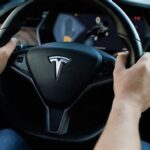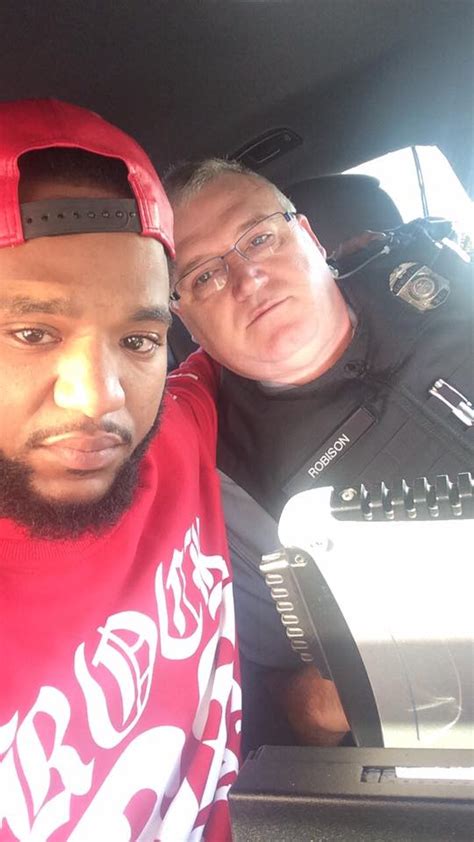
Tesla’s planned robotaxi launch is facing increased scrutiny from U.S. regulators, casting a shadow over Elon Musk’s ambitious timeline and raising concerns about safety and regulatory compliance.
U.S. regulators are intensifying their oversight of Tesla’s upcoming robotaxi service, raising questions about its safety and readiness for public roads. The scrutiny follows Elon Musk’s announcement that Tesla plans to unveil its robotaxi on August 8, 2024, a move that has been met with both excitement and skepticism. The National Highway Traffic Safety Administration (NHTSA) is expected to play a crucial role in assessing whether Tesla’s technology meets federal safety standards before the robotaxi service can be rolled out.
The NHTSA has been investigating Tesla’s Autopilot system for several years, focusing on its performance and potential safety risks. “NHTSA has ongoing investigations of Tesla vehicles equipped with Autopilot,” a spokesperson confirmed. These investigations have covered a range of issues, including collisions involving Autopilot and the system’s ability to handle various driving scenarios.
Tesla’s Autopilot and Full Self-Driving (FSD) systems have been under intense scrutiny due to accidents and safety concerns. The FSD system, which is currently in beta testing with select Tesla owners, has been criticized for its inconsistent performance and the need for frequent driver intervention. Despite these criticisms, Musk has repeatedly asserted that Tesla is close to achieving full autonomy.
The introduction of a robotaxi service would represent a significant leap forward in Tesla’s autonomous driving capabilities. Unlike the current Autopilot and FSD systems, which require driver supervision, robotaxis are designed to operate without human intervention. This raises the stakes for safety and regulatory compliance, as any malfunction or error could have serious consequences.
One of the key challenges for Tesla is demonstrating that its robotaxi technology is safe and reliable enough to operate in a wide range of driving conditions. This includes navigating complex urban environments, responding to unexpected events, and interacting safely with other vehicles and pedestrians. The NHTSA will likely require Tesla to provide extensive data and testing results to demonstrate the safety of its robotaxi system.
The regulatory landscape for autonomous vehicles is complex and evolving. While some states have adopted a more permissive approach to autonomous vehicle testing and deployment, others have taken a more cautious approach. Federal regulations also play a crucial role, particularly in setting safety standards and ensuring that autonomous vehicles comply with existing traffic laws.
The outcome of the NHTSA’s review could have significant implications for Tesla’s robotaxi plans. If the agency determines that Tesla’s technology does not meet federal safety standards, it could delay or even prevent the rollout of the robotaxi service. This would be a major setback for Tesla, which has invested heavily in autonomous driving technology and views robotaxis as a key part of its future business model.
Musk has outlined a vision of a future where Tesla robotaxis operate as a network of on-demand transportation, providing a convenient and affordable alternative to traditional taxis and ride-hailing services. He believes that robotaxis have the potential to revolutionize transportation and reduce traffic congestion and accidents.
However, achieving this vision will require Tesla to overcome significant technological and regulatory hurdles. The company must demonstrate that its robotaxi technology is not only safe but also reliable, efficient, and cost-effective. It must also navigate the complex web of federal and state regulations that govern autonomous vehicles.
The next few months will be critical for Tesla as it works to convince regulators and the public that its robotaxi technology is ready for prime time. The unveiling of the robotaxi on August 8 will be closely watched by industry experts, regulators, and consumers alike.
Tesla’s aggressive timeline for the robotaxi launch has drawn skepticism from industry analysts. Some experts believe that Tesla is overpromising on its autonomous driving capabilities and that the company still has significant work to do before it can safely deploy robotaxis on public roads.
“There’s a big difference between demonstrating autonomous driving in controlled environments and deploying it in the real world,” said a leading expert in autonomous vehicle technology. “Tesla needs to prove that its system can handle the unpredictable nature of real-world driving conditions.”
The NHTSA’s investigation of Tesla’s Autopilot system has uncovered several safety concerns. In one case, the agency found that Autopilot was engaged in a significant number of crashes, including some that resulted in serious injuries or fatalities. The agency has also raised concerns about the system’s ability to detect and respond to emergency vehicles.
Tesla has defended its Autopilot system, arguing that it is designed to assist drivers and improve safety. The company has also pointed out that drivers are always responsible for maintaining control of the vehicle, even when Autopilot is engaged. However, critics argue that Tesla’s marketing of Autopilot and FSD has led some drivers to overestimate the capabilities of the system and become overly reliant on it.
The regulatory challenges facing Tesla are not unique. Other companies developing autonomous vehicle technology have also faced scrutiny from regulators and concerns about safety. However, Tesla’s high profile and Musk’s ambitious pronouncements have made it a particular focus of attention.
The rollout of autonomous vehicles is expected to have a profound impact on the transportation industry, creating new opportunities and challenges. Robotaxis could potentially reduce the cost of transportation, improve accessibility for people who are unable to drive, and reduce traffic congestion and pollution. However, they could also displace taxi drivers and other transportation workers, raise concerns about privacy and data security, and exacerbate existing inequalities.
As autonomous vehicle technology continues to evolve, it is essential that regulators, industry leaders, and policymakers work together to ensure that it is deployed safely and responsibly. This includes establishing clear safety standards, developing robust testing and certification procedures, and addressing the social and economic implications of autonomous vehicles.
The increased regulatory scrutiny on Tesla’s robotaxi plan highlights the challenges and complexities of bringing autonomous vehicles to market. While the technology holds great promise, it also poses significant risks that must be carefully managed. The outcome of the NHTSA’s review will be a crucial test of Tesla’s autonomous driving capabilities and a bellwether for the future of the autonomous vehicle industry.
The August 8 unveiling will be a critical moment for Tesla to demonstrate its technological advancements and address regulator concerns. Market analysts are keenly observing how Tesla will navigate these regulatory hurdles and whether it can meet its ambitious timeline, as this will significantly impact the company’s future direction in the autonomous vehicle market.
Tesla’s stock performance may also be affected by the regulatory outcomes. Investors are closely monitoring the situation, as delays or negative findings from regulatory bodies could lead to a reassessment of Tesla’s growth prospects in the autonomous vehicle sector. The successful launch of a safe and compliant robotaxi service could significantly boost Tesla’s market valuation, while setbacks could have the opposite effect.
Tesla’s approach to autonomous driving differs from some of its competitors. While some companies are focusing on developing fully autonomous vehicles from the outset, Tesla has taken a more incremental approach, gradually adding features to its Autopilot and FSD systems. This approach has allowed Tesla to collect vast amounts of real-world driving data, which it uses to train its autonomous driving algorithms.
However, it has also led to criticism that Tesla is pushing the boundaries of what is safe and responsible. Some experts argue that Tesla should have focused on developing more robust safety features before releasing its FSD system to the public.
The debate over Tesla’s autonomous driving technology raises fundamental questions about the role of regulation in fostering innovation. Some argue that excessive regulation can stifle innovation and prevent companies from bringing new technologies to market. Others argue that regulation is necessary to protect public safety and ensure that new technologies are deployed responsibly.
Finding the right balance between fostering innovation and protecting public safety is a key challenge for regulators as they grapple with the rapid pace of technological change. The case of Tesla’s robotaxi plan illustrates the complexities of this challenge and the importance of careful and thoughtful regulation.
The scrutiny surrounding Tesla’s robotaxi plans also underscores the broader societal implications of autonomous vehicles. As these technologies become more prevalent, it is crucial to address issues such as job displacement, data privacy, and algorithmic bias. These issues require a collaborative effort involving governments, industry, and civil society.
The potential benefits of autonomous vehicles are significant, but realizing these benefits will require careful planning and execution. It is essential to ensure that autonomous vehicles are not only safe and reliable but also equitable and sustainable.
Tesla’s robotaxi initiative is not just a technological endeavor; it is a societal experiment with far-reaching consequences. The decisions made by regulators, policymakers, and industry leaders in the coming months will shape the future of transportation and the way we live.
The development and deployment of autonomous vehicles represent a paradigm shift in transportation. As these technologies continue to advance, it is crucial to engage in a broad and inclusive dialogue about their implications. This dialogue should involve experts from various fields, including engineering, law, ethics, and social sciences.
The ultimate goal should be to create a transportation system that is safe, efficient, equitable, and sustainable. Achieving this goal will require a commitment to innovation, collaboration, and responsible regulation.
Tesla’s robotaxi rollout is more than just a new product launch; it is a test case for the future of transportation. The lessons learned from this experience will inform the development and deployment of autonomous vehicles for years to come. The industry will continue to watch closely as Tesla navigates these regulatory hurdles and attempts to bring its vision of autonomous transportation to reality.
The outcome of this regulatory scrutiny will not only affect Tesla but also set precedents for the broader autonomous vehicle industry. As regulators grapple with the complexities of this technology, their decisions will shape the future of transportation and the regulatory framework for autonomous vehicles.
The unfolding situation with Tesla’s robotaxi underscores the intricate balance between technological innovation and regulatory oversight, especially when it comes to public safety. It also highlights the need for transparent communication and public engagement as autonomous vehicles become more integrated into our daily lives. The future of Tesla’s robotaxi hinges on addressing these challenges and demonstrating a commitment to safety and regulatory compliance.
The success of Tesla’s robotaxi also depends on public trust and acceptance. Surveys have shown that many people are still hesitant to trust autonomous vehicles, citing concerns about safety and reliability. Building public confidence in these technologies will require a concerted effort by industry, government, and researchers.
The regulatory landscape for autonomous vehicles is constantly evolving, and Tesla must stay ahead of the curve to ensure that its robotaxi service complies with all applicable laws and regulations. This requires a proactive approach to regulatory engagement and a willingness to adapt to changing requirements.
The economic implications of Tesla’s robotaxi service are also significant. If successful, the service could generate billions of dollars in revenue for Tesla and create new jobs in the autonomous vehicle industry. However, it could also displace workers in traditional transportation industries, such as taxi drivers and ride-hailing drivers.
The potential impact of autonomous vehicles on urban planning and infrastructure is another important consideration. As autonomous vehicles become more prevalent, cities may need to redesign their streets and infrastructure to accommodate them. This could include creating dedicated lanes for autonomous vehicles, installing new sensors and communication systems, and adapting traffic signals and signage.
The environmental impact of autonomous vehicles is also a key concern. While autonomous vehicles have the potential to reduce traffic congestion and improve fuel efficiency, they could also increase vehicle miles traveled and exacerbate air pollution if not managed properly. It is important to ensure that autonomous vehicles are powered by clean energy and that they are used in a way that minimizes their environmental footprint.
The ethical considerations surrounding autonomous vehicles are complex and multifaceted. One key issue is how to program autonomous vehicles to make decisions in unavoidable accident scenarios. For example, if an autonomous vehicle is faced with a choice between hitting a pedestrian and swerving into another vehicle, how should it be programmed to decide?
These ethical dilemmas require careful consideration and public debate. It is important to ensure that autonomous vehicles are programmed in a way that reflects societal values and promotes the common good.
The cybersecurity of autonomous vehicles is another critical concern. Autonomous vehicles are highly complex systems that rely on sophisticated software and communication networks. If these systems are compromised by hackers, it could have serious consequences, including loss of control of the vehicle and potential for accidents.
It is essential to ensure that autonomous vehicles are designed with robust cybersecurity protections and that they are regularly updated to address emerging threats.
The legal and liability issues surrounding autonomous vehicles are also complex. If an autonomous vehicle is involved in an accident, who is responsible? Is it the vehicle manufacturer, the software developer, or the owner of the vehicle?
These legal questions are still being debated, and it may take years for clear legal precedents to be established. In the meantime, it is important to have insurance coverage in place to protect against potential liabilities.
Tesla’s robotaxi plan represents a bold vision for the future of transportation. While the company faces significant challenges in bringing this vision to reality, the potential rewards are enormous. If Tesla can successfully navigate the technological, regulatory, and societal challenges, it could revolutionize the way we travel and transform the transportation industry. The unveiling on August 8, and the subsequent reactions from regulators and the public, will be defining moments for Tesla and the future of autonomous vehicles.
The long-term success of Tesla’s robotaxi venture will depend on its ability to demonstrate sustained safety, reliability, and economic viability. Building trust with the public and maintaining positive relationships with regulators will be essential for achieving this goal.
The lessons learned from Tesla’s robotaxi experience will shape the development of autonomous vehicle technology for years to come. The industry is watching closely to see how Tesla navigates these challenges and whether it can deliver on its promise of a safe and affordable autonomous transportation service. The ongoing investigations and regulatory scrutiny serve as a reminder of the complexities and responsibilities that come with developing and deploying autonomous vehicles.
Frequently Asked Questions (FAQ)
1. What is a robotaxi and how does it differ from Tesla’s current Autopilot and Full Self-Driving (FSD) systems?
A robotaxi is an autonomous vehicle designed to operate without any human driver intervention. Unlike Tesla’s existing Autopilot and FSD systems, which require drivers to remain attentive and ready to take control, robotaxis are intended to navigate and operate entirely on their own. Tesla’s Autopilot is primarily a driver-assistance system for highway driving, while FSD, currently in beta, aims for more comprehensive autonomous capabilities but still requires active driver supervision. The robotaxi would represent a significant advancement, offering full autonomy without the need for a human driver behind the wheel.
2. What are the key safety concerns regulators have regarding Tesla’s robotaxi plans?
Regulators, particularly the NHTSA, are primarily concerned with the safety and reliability of Tesla’s autonomous driving technology in real-world conditions. Key concerns include:
- System Performance: Ensuring the robotaxi can handle a wide range of driving scenarios, including complex urban environments, unexpected events, and adverse weather conditions.
- Emergency Response: Evaluating how the robotaxi responds to emergency vehicles, pedestrians, and other vulnerable road users.
- Cybersecurity: Ensuring the robotaxi is protected against hacking and other cybersecurity threats that could compromise its safety.
- Redundancy and Fail-Safe Mechanisms: Verifying the presence of robust backup systems in case of technology failures.
- Data Collection and Privacy: Assessing the collection, use, and security of data generated by the robotaxis.
3. What are the potential implications if the NHTSA determines Tesla’s robotaxi technology does not meet federal safety standards?
If the NHTSA finds that Tesla’s robotaxi technology fails to meet federal safety standards, it could lead to several significant implications:
- Delayed Rollout: The most immediate impact would be a delay in the planned August 8 unveiling and subsequent deployment of the robotaxi service.
- Requirement for Modifications: Tesla may be required to make substantial modifications to its technology, which could be costly and time-consuming.
- Limited Deployment: The NHTSA could restrict the areas or conditions under which the robotaxi service can operate, limiting its commercial viability.
- Legal Challenges: Adverse findings could lead to lawsuits and other legal challenges from consumers and advocacy groups.
- Reputational Damage: A negative assessment from the NHTSA could harm Tesla’s reputation and erode public trust in its autonomous driving technology.
4. How could the introduction of robotaxis impact the transportation industry and society?
The introduction of robotaxis could have far-reaching impacts on the transportation industry and society:
- Reduced Transportation Costs: Robotaxis have the potential to lower transportation costs by eliminating the need for human drivers.
- Increased Accessibility: They could improve accessibility for people who are unable to drive, such as the elderly, disabled, and those without access to personal vehicles.
- Reduced Traffic Congestion: By optimizing routes and traffic flow, robotaxis could help reduce traffic congestion in urban areas.
- Job Displacement: The widespread adoption of robotaxis could lead to job losses for taxi drivers, ride-hailing drivers, and other transportation workers.
- Urban Planning Changes: Cities may need to redesign their streets and infrastructure to accommodate autonomous vehicles, including dedicated lanes and new sensor systems.
- Environmental Impact: The environmental impact depends on the energy source of the robotaxis; if powered by clean energy, they could reduce emissions, but increased vehicle miles traveled could offset these benefits.
5. What are the key ethical and legal considerations surrounding the deployment of autonomous vehicles like Tesla’s robotaxi?
The deployment of autonomous vehicles raises several complex ethical and legal considerations:
- Accident Liability: Determining who is liable in the event of an accident involving a robotaxi is a major legal challenge. Is it the manufacturer, the software developer, or the owner?
- Algorithmic Bias: Ensuring that the algorithms that control robotaxis do not exhibit bias that could disproportionately harm certain groups of people.
- Cybersecurity: Protecting robotaxis from hacking and other cybersecurity threats that could compromise their safety.
- Data Privacy: Addressing concerns about the collection, use, and security of data generated by robotaxis.
- “Trolley Problem” Scenarios: Deciding how to program autonomous vehicles to make decisions in unavoidable accident scenarios where someone will inevitably be harmed.
- Regulatory Framework: Establishing clear and consistent regulations for autonomous vehicles at the federal and state levels to ensure safety and accountability.
Tesla’s progress in resolving these concerns and adhering to regulatory standards will determine the success of its robotaxi initiative.









